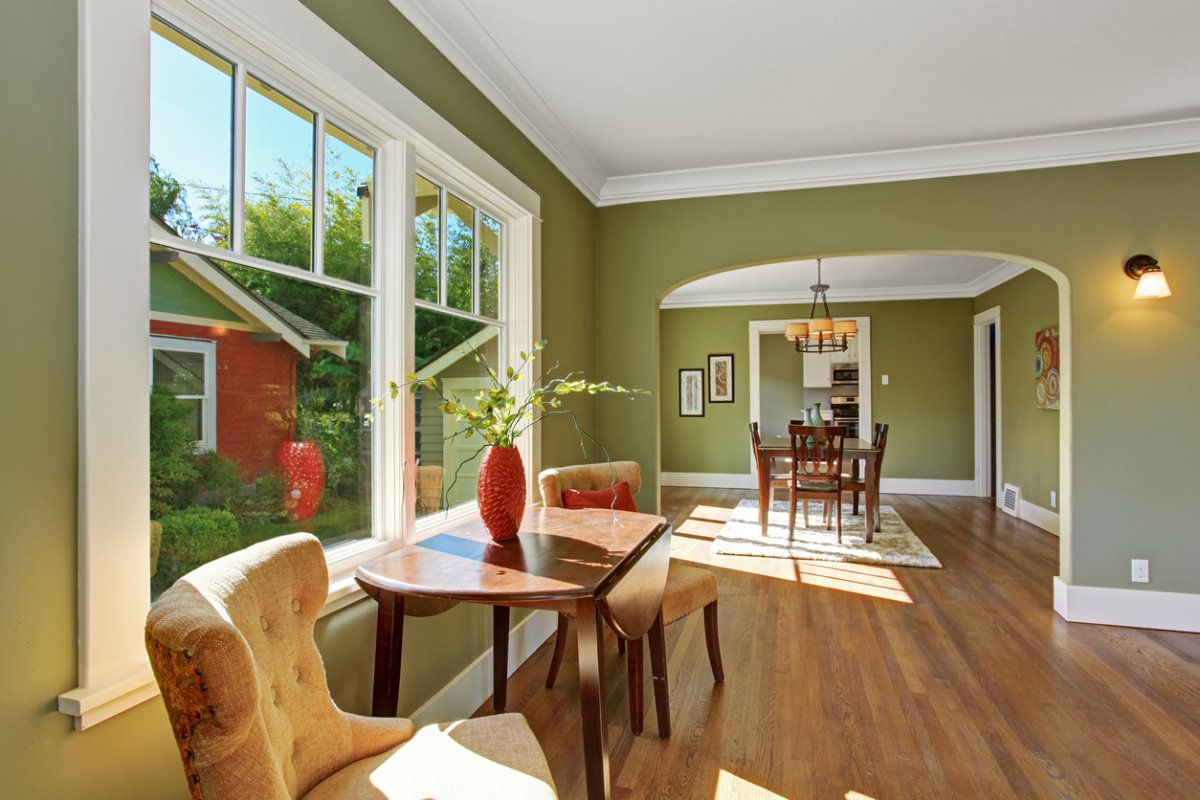

We may earn revenue from the products available on this page and participate in affiliate programs. Learn More ›
Molding and trimwork exist in myriad forms and can enhance any style of home. There are so many kinds of molding that it’s often difficult to remember all of the names and know which type best suits a specific use, a particular house style, or type of room.
While trimwork might seem like it should fall under the category of decorating, most types of molding are actually designed to serve useful purposes. For example, door casing elegantly covers gaps around a door frame, and crown molding conceals imperfections where the walls meet the ceiling.
Bu while molding has practical uses, it’s especially valued for the beauty and visual interest it brings to interior spaces. And thanks to modern materials, it’s never been easier to add molding to your home. In addition to traditional wood molding, today’s moldings are made from a range of materials, including MDF, polyurethane, vinyl, PVC, and polystyrene, and many of these options can be purchased already primed or painted. As well, the advent of flexible molding has made it easier to install trim on rounded walls, with easy-to-cut pieces that are often peel-and-stick and can be rolled for storage or transport.
With so much to choose from, how do you know which molding profile to use where? Keep reading to find out what you need to know about residential trim and molding so you are ready to purchase the right types of molding for your home remodeling project.
1. Casing
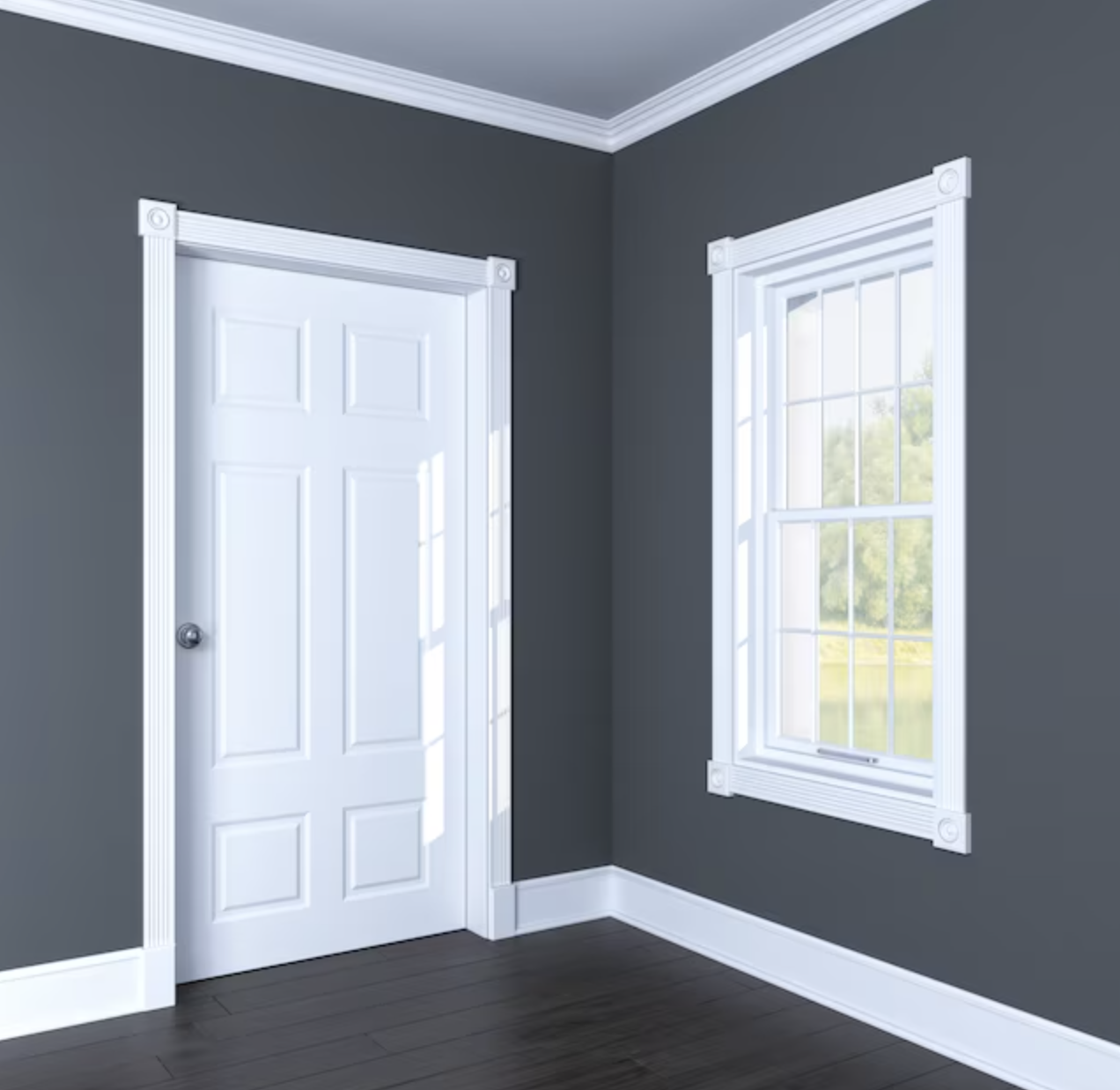
Aside from some luxury modern interiors, door casing is used in most types of houses. For those who associate trimwork with upscale housing, it may sound odd that not having door casing is a premium feature. However, it makes sense when you know why.
Door and window casing covers the unfinished gaps between walls and a door or window frame. These gaps exist because it’s easier to cut the drywall so that it’s close enough to the window frame than it is to finish the drywall perfectly around the frame. To put this in context, off-the-shelf casing usually costs about $150 to $250 per door, while it can cost about $1,000 to hire a pro to finish the drywall around a door.
Though different variations of door casing styles are readily found, including fluted and flat designs, the width of casing typically extends 2¼ to 3½ inches or more. Some may choose to miter the corners where the casing members meet, while others may use corner blocks or butt joints.
Best for: Casing is used around windows and doors to conceal any imperfections or gaps between the drywall and the window or door frame. There are a variety of casing profiles available to fit a range of house styles and budgets.
Get fluted casing at The Home Depot for $13.78 per 8-foot piece
Get colonial-style finger-jointed primed pine casing at Lowe’s for $6.98 per 7-foot piece
RELATED: 9 Ways to Dress Up a Room with Molding
2. Baseboard
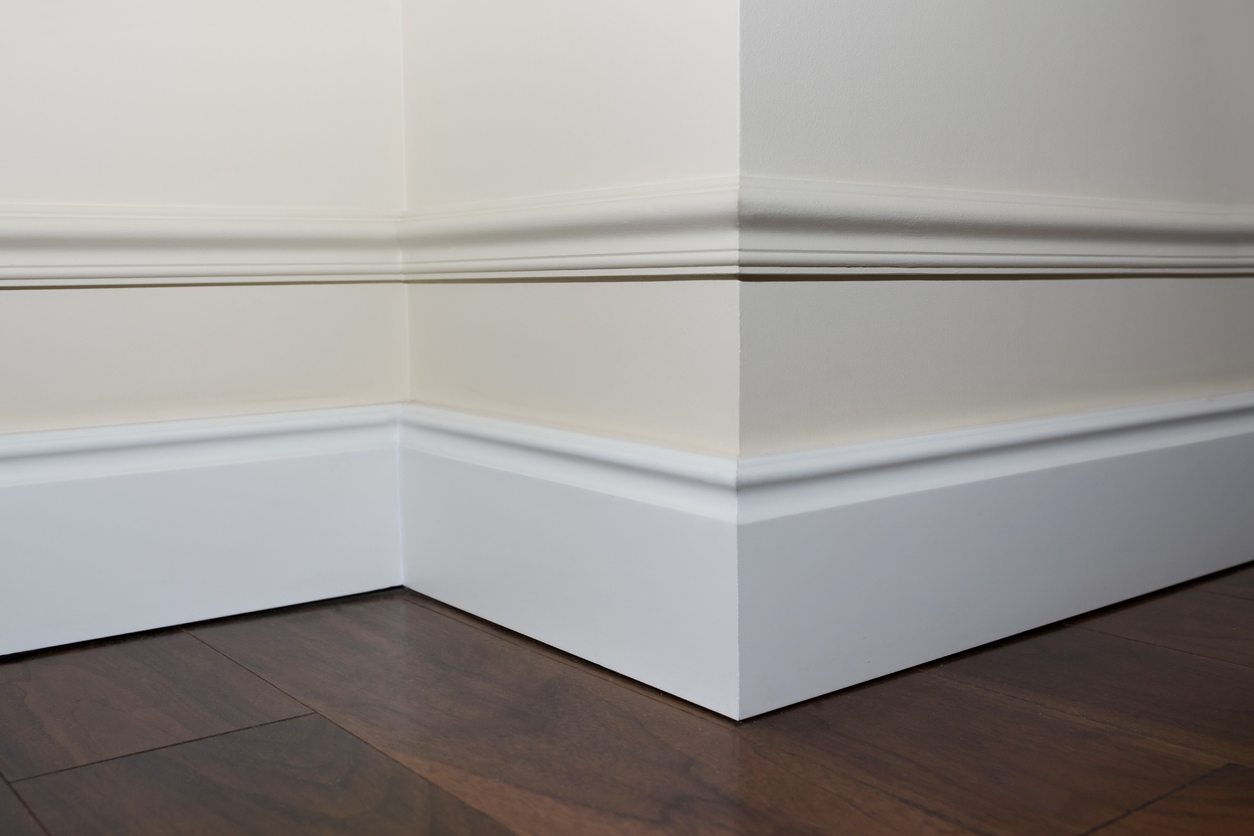
The trimwork that covers the bottom of walls is called baseboard. Originally designed for the practical purpose of protecting walls from nicks and gouges caused by moving furniture or other household activities, it’s also a decorative element. In a standard-height room, baseboards are usually about 3 to 5 inches tall, though in grander or older homes they may be much taller.
A flat baseboard with a square or beveled edge is among the most popular styles today, and it fits well with a modular and modern aesthetic. But baseboards can also be quite intricate, rivaling some crown molding profiles.
Baseboard can be purchased as a single piece or it can be built up from multiple layers and accented with a small piece of shoe molding, which is often a quarter-round trim along the bottom edge. PVC or MDF baseboards start at around $1 per linear foot.
Best for: Baseboard is applied to the bottom of a wall to cover the gap or imperfections between the flooring and the wall. It also enhances the overall appearance of a room and reduces the amount of finish work required for flooring and drywall installations.
Get 3 1/4-inch-tall primed finger-jointed pine baseboard at The Home Depot for $1.47 per linear foot
Get 5 1/2-inch-tall primed MDF baseboard at Lowe’s for $16.27 per 8 linear feet
RELATED: 17 Times Shiplap Made the Room
3. Quarter Round
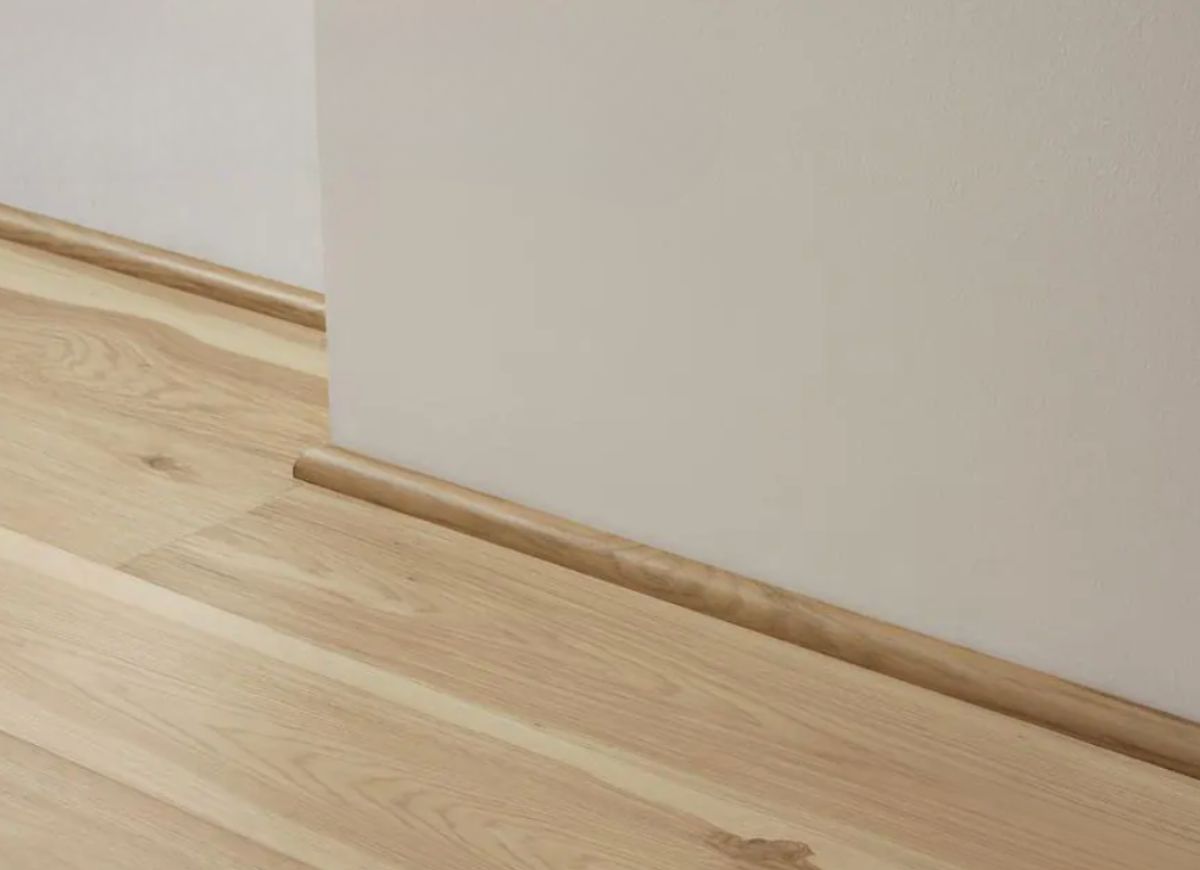
Quarter round can be used on its own, although it is often part of built-up trimwork, where several different types of molding are combined to create a more elaborate baseboard, mantel, or other architectural element. Because it is commonly used as shoe molding to hide any gaps or irregularities between the bottom of the baseboard and the floor, it is also known as base shoe molding. Yet, although they look similar, actual shoe molding is not quarter round. Shoe molding is taller than it is deep, while the depth and width of quarter round are the same.
As the name suggests, quarter-round molding has a curved profile that is shaped like a quarter of a circle. There are other types of shoe molding with different profiles, such as half round, reverse half round, and cove. Quarter round, like the other moldings used as shoe trimwork, is a short molding, about ½ inch to ¾ inch tall. The cost per linear foot averages 50 cents to $4 or more, depending on the material.
Best for: Quarter round is typically placed along the base of a wall, either added to the bottom edge of a baseboard or as an inexpensive and modest replacement for a baseboard. Quarter round is also used as part of other built-up trimwork like mantels.
Get 11/16-inch-tall colonial primed pine quarter round at Lowe’s for $8.98 per 8 linear feet
Get 11/16-inch-tall MDF white quarter round at The Home Depot for $1.61 per linear foot
RELATED: 6 Things to Know Before Installing Interior Trim
4. Crown
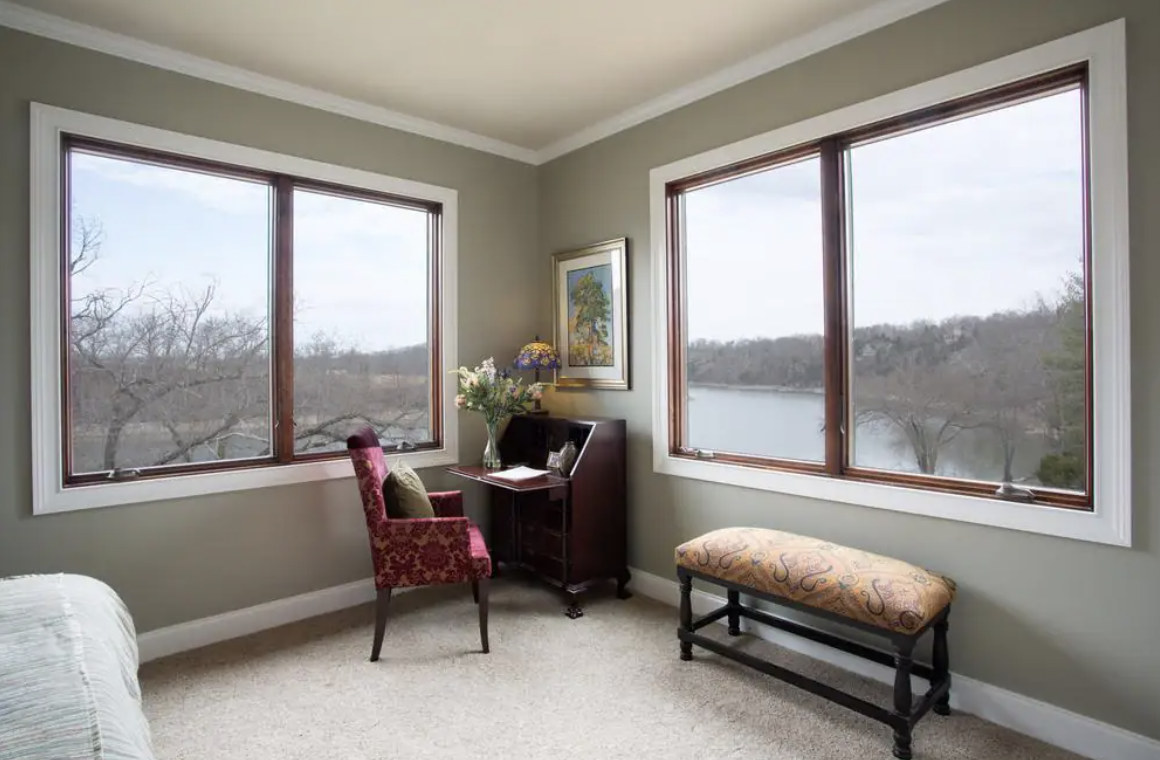
Aptly named, this molding is the crowning architectural feature of a room, as it demarcates the transition between the walls and the ceiling. Crown moldings, which are interior architectural elements, are to an extent similar to cornices on the exterior of a building. They are both types of molding for ceiling applications, but cornices jut out from the profile of the structure, while crown molding covers the joint between walls and ceilings, providing a smooth progression. That said, cornices are occasionally used as interior elements.
Crown moldings typically boast intricate silhouettes and can include just one piece or multiple pieces of molding. There are many types of crown molding to choose from, in a variety of styles and heights. Molding prices start at $1 per linear foot at the low end up to an average of $15 per linear foot; expect to pay about $4 to $23 per linear foot installed. The expense can rise dramatically depending on the material, detail of the profile, and difficulty of installation.
Best for: Crown molding is most commonly used in formal spaces to enhance the rooms’ style and to hide any imperfections between the walls and ceiling. It is also used as a detail on cabinets and other built-ins.
Get 3 5/8-inch-tall primed finger-jointed crown molding at The Home Depot for $2.88 per linear foot
Get 17 3/4-inch-tall primed polyurethane crown molding (12-pack of 7-foot-10 1/2-inch lengths) at Lowe’s for $4,246.65
5. Chair Rail
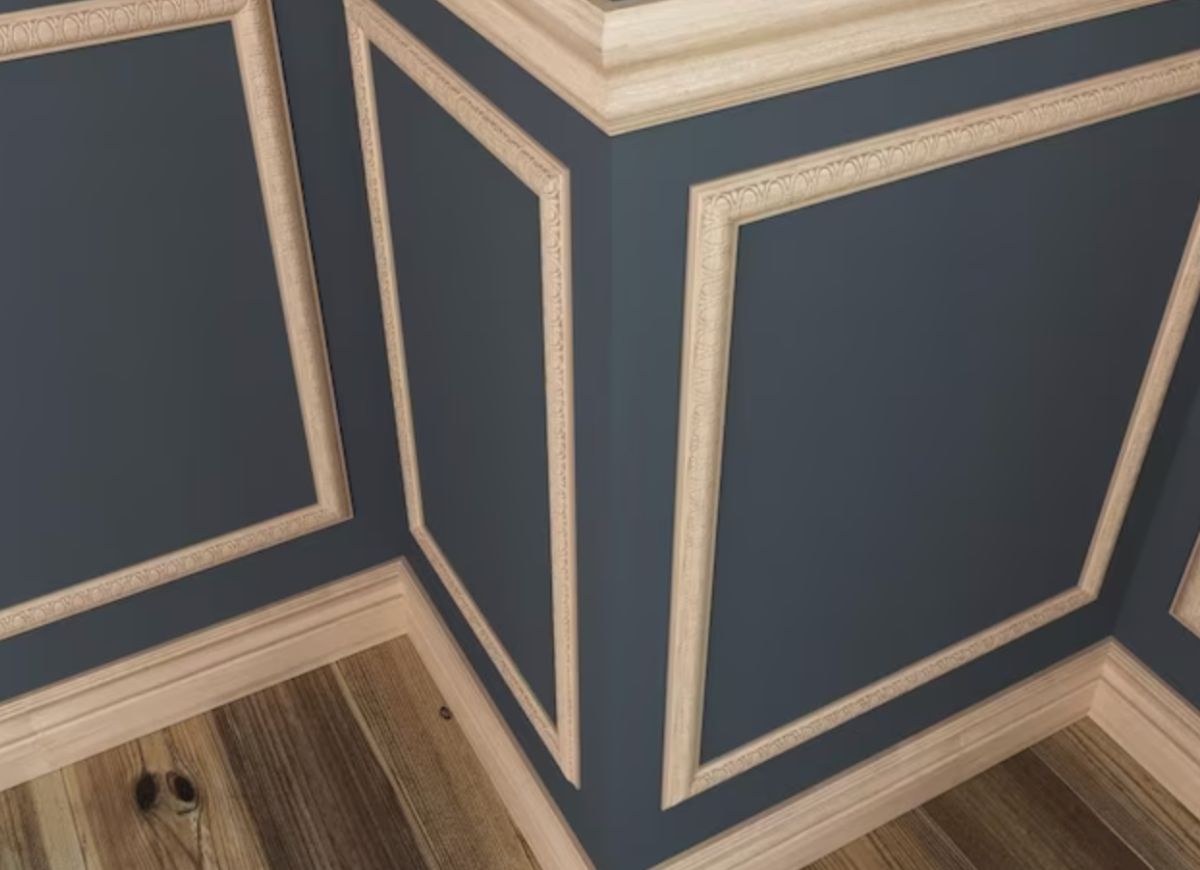
Chair railing is a functional molding installed to protect walls from being damaged by furniture. Of course, it can also serve a purely decorative function—for instance, to add texture and visual interest to a room, or to delineate two different types of wall coverings, such as paint and wallpaper, or wainscoting and paint.
Chair rail comes in many sizes and profiles. For modern aesthetics, a flat chair rail may be preferred, while those restoring a historic property may desire an egg-and-dart or beaded chair rail that’s more true to the house’s era. Bear in mind that with greater detail comes greater expense. The national average for chair rail molding is about $1.29 per linear foot, and the cost of materials and installation combined ranges, on average, from about $5.30 to $8.30 per linear foot.
Best for: Chair rail offers a decorative way to protect walls from the backs of chairs and other furniture along the edge of a room. It’s a functional and stylish way to express a home’s aesthetic.
Get 1 1/4-inch-tall hardwood egg-and-dart chair rail at Lowe’s for $4.59 per 8-foot length
Get 3-inch-tall polyurethane chair rail at The Home Depot for $24.97 per 94 1/2-inch length
RELATED: How To: Install Chair Rail Molding
6. Picture Rail
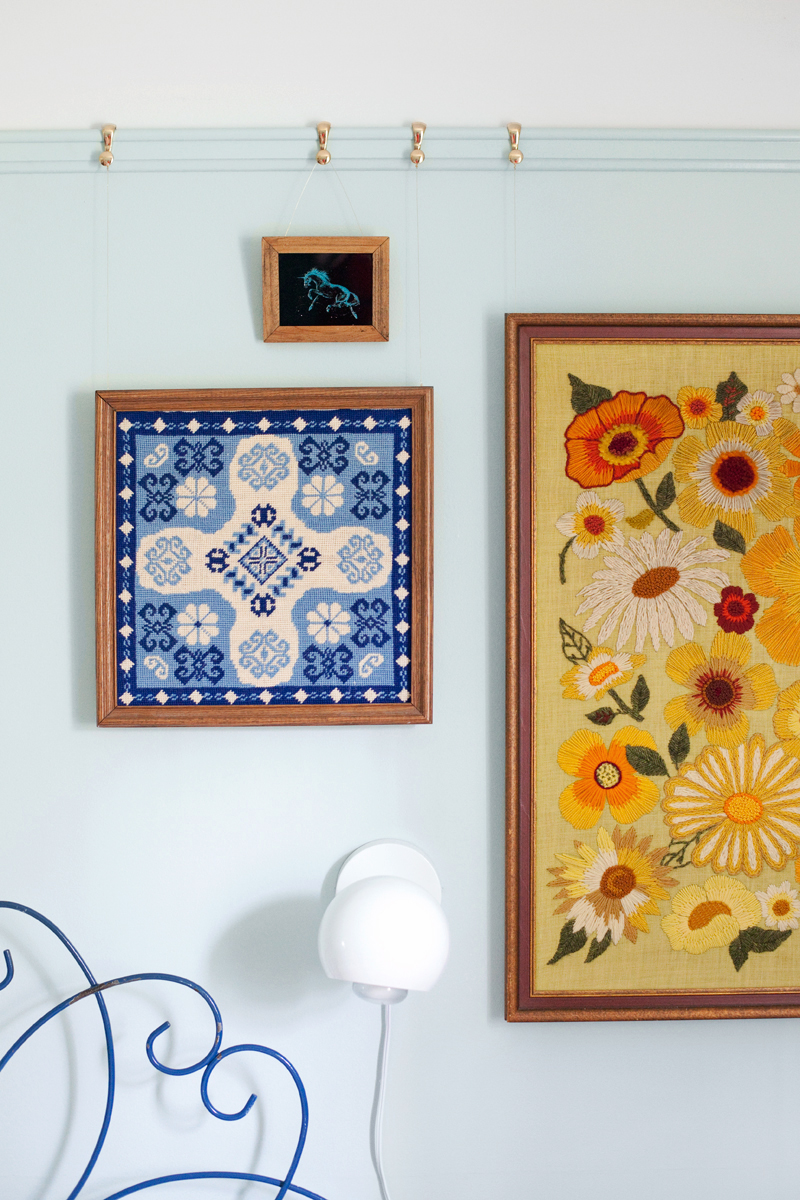
Before there were temporary wall hooks, there was the decorative and functional picture rail. Picture rail molding, as seen in this installation by A Beautiful Mess, allows artwork to be hung without having to drive nails into the wall.
Often set less than an inch below crown molding or as far as about 12 inches below the ceiling, picture rail molding is typically about 1 or 2 inches tall. When paired with crown molding, it is often mistakenly assumed to be part of the crown. Installation for picture rail, also known as picture frame molding in the U.S., usually costs about $1 to $2 per linear foot.
Best for: Picture rail is a decorative tool that’s ideal for historic or traditionally styled homes. It makes it easy for homeowners to swap artwork in and out without marring the walls or relying on temporary hooks.
Get white hardwood picture rail at Lowe’s for $13.99 per 8-foot length
Get hardwood picture rail at The Home Depot for $16.18 per 96-inch length
7. Cove
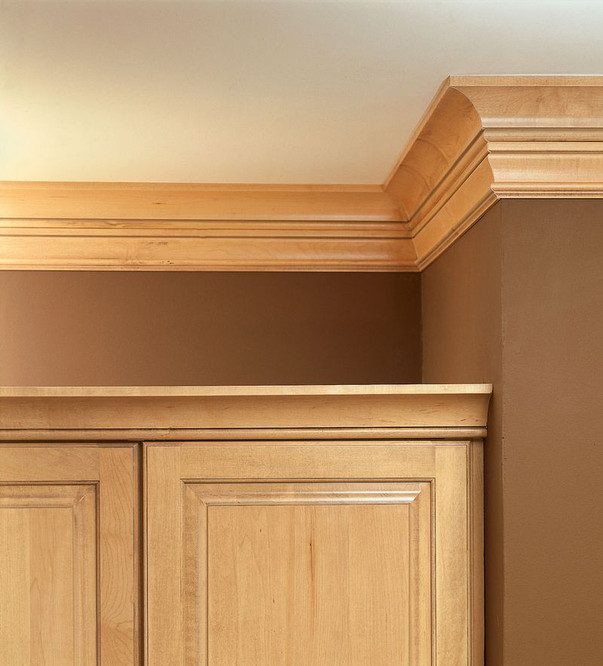
Known as coving in Britain, cove molding is plain, concave-shaped trim used where the walls and ceiling meet. It is also used on stairs, where the riser meets the tread. Cove may be considered, in essence, a less ornate version of crown and is among the types of crown molding for kitchen cabinets.
While cove molding is simpler in profile than most crown molding styles, its shape and installation is similar, so the expected average cost of cove molding is about the same as it is for crown molding, starting at about $1 per linear foot.
Best for: Cove molding is typically installed at the top of a wall, where crown molding usually appears, or at the top of a cabinet or other substantial piece of furniture. Cove molding has a simple, concave face and is less elaborate and generally less expensive than crown molding.
Get primed pine finger-jointed cove molding at The Home Depot for $6.28 per 96-inch length
Get Craftsman unfinished cove molding at Lowe’s for $13.98 per 8-foot length
8. Dentil
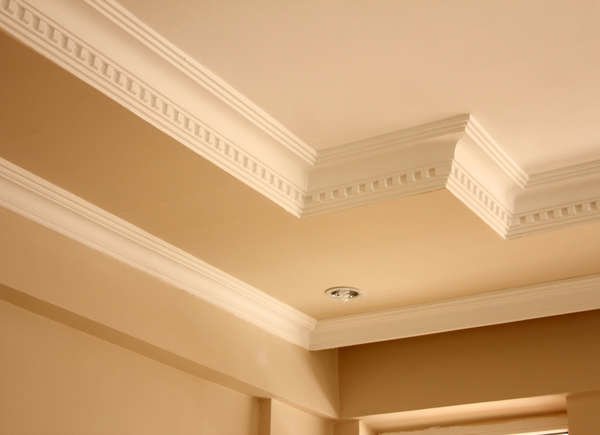
An ornamental detail with a Classical pedigree, dentil molding consists of small, evenly spaced blocks in a repeating pattern, similar to teeth. In fact, the word “dentil” is related to the Latin word for tooth (“dens”). Dentil molding is frequently incorporated into the bottom portion of a cornice or crown molding and is often found in historic homes of Neoclassical or Classical style.
While the ancient Greeks and Romans carved dentil molding into stone, today it’s made from wood or polyurethane and is available in both exterior and interior options. Dentil molding is more expensive than cove molding or other moldings with simpler profiles, and it’s also more expensive to install.
Best for: Traditional homes and homes with Classical detailing often have dentil molding along the bottom of a crown molding or cornice. Occasionally, dentil molding is found on chair rail or as detailing in furniture.
Get dentil crown molding at Lowe’s for $31.81 per 7-foot-10 1/2-inch length
Get dentil panel molding at The Home Depot for $4.58 per 4-foot length
RELATED: 5 Classic Wall and Trim Color Combinations—and 5 for Rule-Breakers Only
9. Egg and Dart

Mostly used in tandem with crown or chair rail, egg-and-dart molding comprises oval shapes alternating with V-like darts. Some sources suggest that the shapes are inspired by the opium poppy and its leaves, while others contend that they symbolize the duality of life, with birth (the egg) and death (the dart). No matter the origins of the design, egg-and-dart molding takes some experience and craftsmanship to install, so it’s usually a pricier option than dentil molding.
Like dentil molding, egg and dart’s origins lie in ancient Greek and Roman architecture, where the design was carved in stone. Today’s egg-and-dart moldings take advantage of modern materials and can be found in a variety of options, from solid wood to polyurethane.
Best for: Homes and commerical buildings with classically styled architecture
Get egg-and-dart chair rail at The Home Depot for $23.48 per 8-foot length
Get egg-and-dart primed crown molding at Lowe’s for $19.84 per 7-foot-10 1/2-inch length
10. Batten
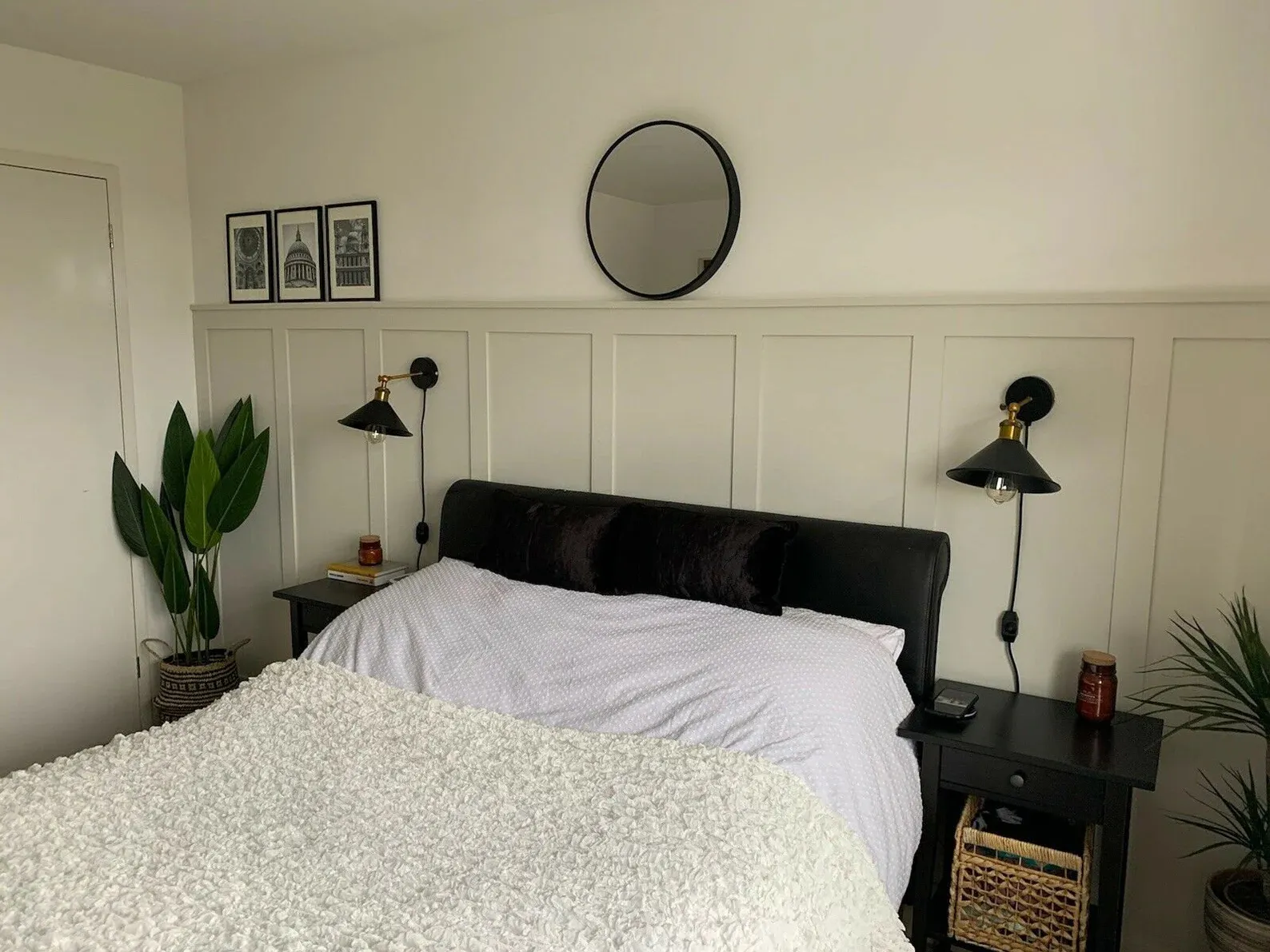
A component of traditional board-and-batten siding, batten is a flat strip of wood used to hide the joint between two pieces of paneling. Indoors, board-and-batten is often used as a less expensive type of wainscoting or paneling, with the battens providing vertical shadow lines that help make a flat wall surface more interesting. This type of treatment is particularly fitting for a modern farmhouse style.
Though this style of siding was developed as a practical building element for rustic dwellings, today’s interior board-and-batten walls are often painted white and considered chic. Battens, which are also known as furring strips or strapping, are typically wood strips that are 3 inches wide and about ½ inch thick.
Best for: Battens are one component of the board-and-batten feature wall that has become chic and trendy in modern farmhouse-style homes.
Get a 55-inch-tall by 60-inch-wide board-and-batten kit from Etsy for $74.65
Get 3-inch-wide furring strips at The Home Depot for $2.54 per 8-foot length
RELATED: How to DIY a Board-and-Batten Wall
11. Pearl and Bead
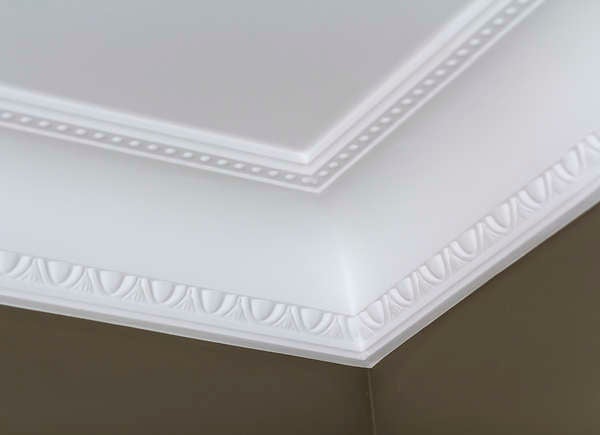
While the terms “bead” and “pearl” molding are used interchangeably, they aren’t the same. Pearl molding includes a row of small spheres. Bead molding is a rounded detail that runs the entire length of a piece of trim and is often used to hide a seam where two other pieces of trim meet.
Both pearl and bead trim pieces are frequently used as part of chair rail or crown molding and are often paired with other detailed trim designs, such as leaves, darts, or spindles. Pearl molding is usually more expensive than beaded trimwork and is comparable in cost to other highly articulated designs like egg and dart.
Best for: Both pearl and bead molding are used as part of a built-up trim detail to provide more depth and visual interest to an overall installation in a formal or traditional space.
Get beaded casing at The Home Depot for $20.74 per 84-inch length
Get beaded chair rail at Lowe’s for $5.29 per 8-foot length
12. Scribe

Like bead molding, scribe is a thin trim piece used between two other elements, but it’s a less formal trim that’s used specifically in vertical applications. In cabinet installation, scribe is often used to cover a gap between the wall or ceiling and a cabinet or another built-in element, such as an entryway organizer, around the home.
The cost of scribe molding is similar to the cost of other simple trim pieces like quarter round, but as it’s a type of cabinet molding, the cost of installation is usually folded into the labor for the cabinet installation or other project that requires this type of trim piece.
Best for: Covering gaps between cabinets
Get cabinet scribe rail at Lowe’s for $34.98 per 96-inch length
Get scribe molding at The Home Depot for $24 per 91.5-inch length
13. Wainscoting
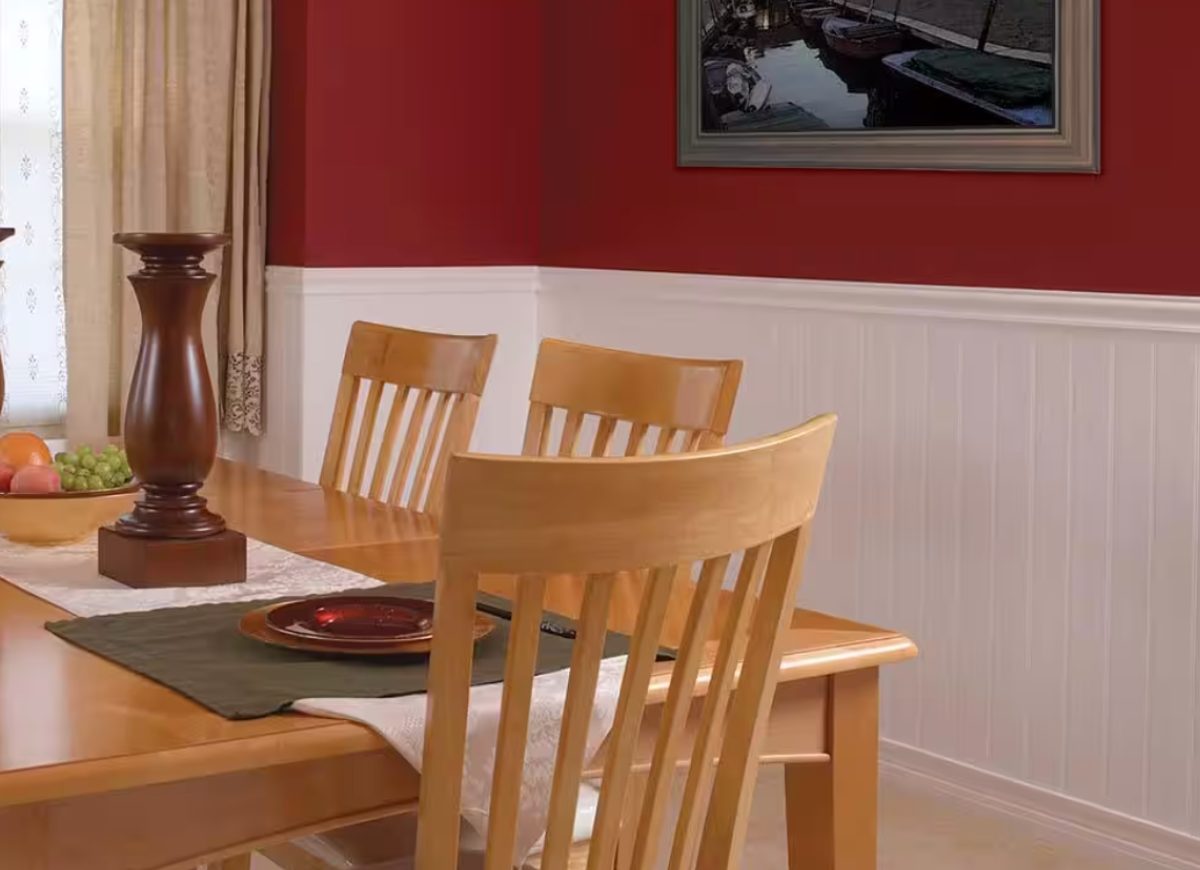
Historically, this wood paneling, which could cover an entire wall or just the lower half, was used to protect plaster walls from errant chairs and other hazards of daily life. Today’s wainscoting serves a more decorative purpose, usually covering just the bottom section of a wall and topped with chair rail. It’s available in a range of materials and colors, and it can be used at many different heights, in many different configurations and treatments, including beadboard, board-and-batten, shiplap, raised panel, and more. No matter the type, today wainscoting is no longer installed simply to protect the wall surface, but to make a style statement.
As there are so many types of wall molding and wainscoting, it’s tough to provide an average cost. However, most homeowners can expect the budget to start at about $5.50 per square foot for a simple wainscoting project.
Best for: Wainscoting covers the surface of a wall—either all of it or just the bottom portion—with some form of paneling to add visual interest.
Get beadboard wainscoting at Lowe’s for $12.98 for a 32-inch-by-48-inch panel
Get tongue-and-groove wainscoting panel at The Home Depot for $24.97
